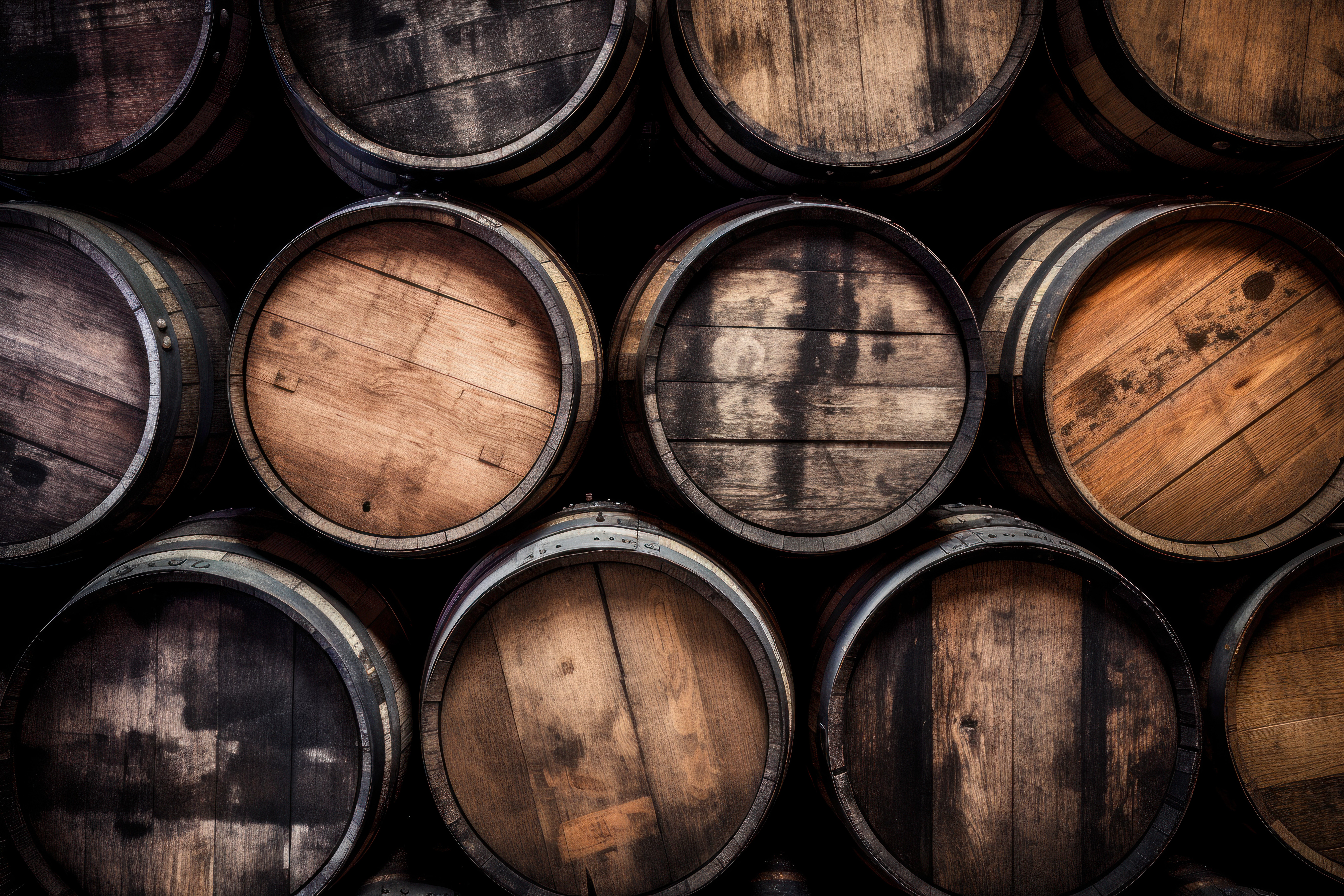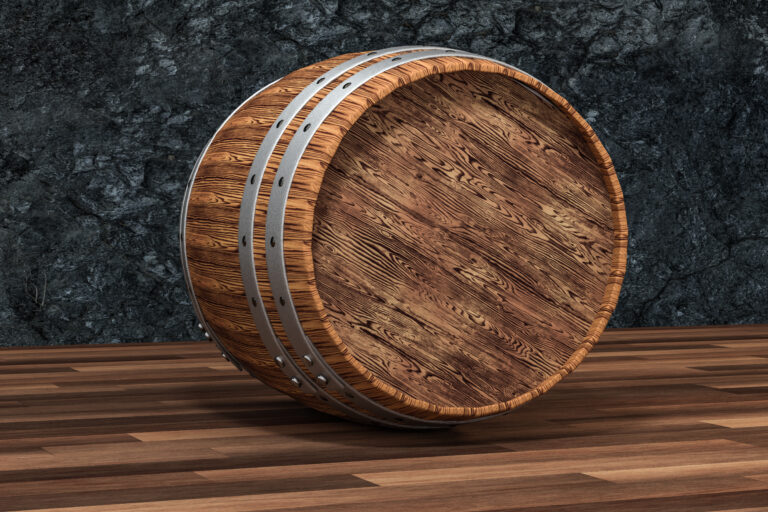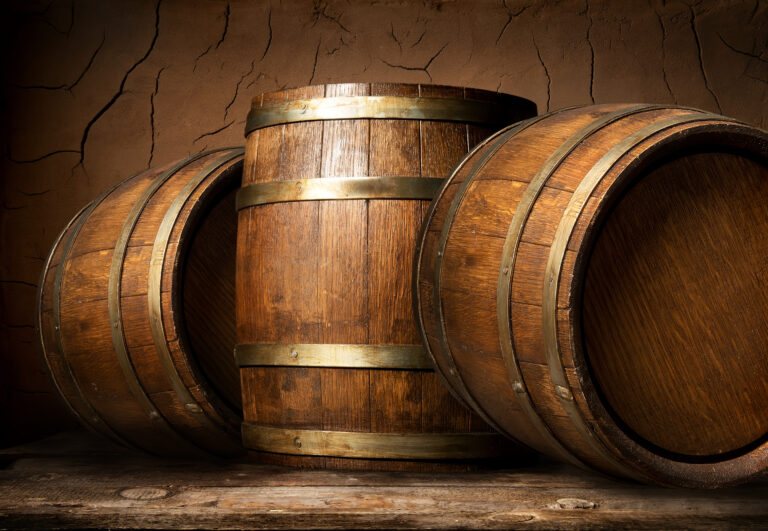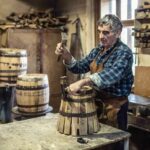Whiskey lovers, gather ’round! We all know that rich, inviting color and much of that delicious flavor in your favorite whiskey comes from its intimate dance with oak barrels during aging. But here’s a little secret that truly makes each dram unique: barrel charring. This fiery process of burning the inside of the barrels isn’t just for show; it’s a fundamental step in crafting those distinctive whiskey flavor profiles. Charring caramelizes the wood sugars, unlocking delightful sweet notes like vanilla, and creates a crucial charcoal layer that acts as a natural filter, mellowing the whiskey beautifully. The beauty of it all? The level of charring can be meticulously customized to achieve a vast spectrum of whiskey aromas and tastes. A heavier char, for instance, imparts robust, smoky flavors, while a lighter touch allows the oak’s inherent sweetness and spice to shine through. So, the next time you raise a glass of your preferred aged spirit, take a moment to appreciate the incredible artistry that goes into crafting its one-of-a-kind character during its whiskey maturation journey. The ancient art of barrel charring is undeniably one of the key secrets that elevates whiskey to a league of its own.
What Is Barrel Charring?
At its heart, barrel charring is an essential process in whiskey production that involves precisely burning the inside of oak barrels to caramelize the wood sugars. This critical step plays a huge role in imparting complex flavors to the aging whiskey.
Imagine this: barrels are exposed to an open flame for a brief but intense period, typically a mere 30 to 90 seconds. This carefully controlled charring process forms a layer of charred wood and those wonderfully caramelized sugars right inside the barrel.
When the raw spirit, or “new make,” is introduced into these charred barrels, compounds from the wood and the caramelized sugars slowly begin to seep into the whiskey, bestowing upon it a distinctive flavor and that signature amber hue. The longer the whiskey ages in this charred embrace, the more flavor it eagerly absorbs from the barrel’s embrace.
The level of char, often referred to as the “char level,” can be meticulously customized depending on the desired flavor intensity. A lighter char, sometimes called a “toast,” will contribute more subtle flavors. A medium char, which you’ll find in most mainstream bourbon whiskey and scotch whisky, often produces those classic caramel and vanilla notes. For those seeking a bolder experience, a heavy char delivers pronounced smoky flavors.
And let’s not forget the wood itself! The type of oak used, typically American or French, also profoundly influences the final flavor. American oak, for instance, tends to lend sweeter characteristics, while French oak often contributes more spice notes. The wood’s origin, how it’s seasoned, and the precise char level all provide boundless opportunities for crafting a truly unique whiskey flavor profile.
Barrel charring is truly an art form, a testament to the distiller’s skill. Master distillers meticulously match their barrels to their desired whiskey profiles to create those distinctive, award-winning spirits we all cherish. So, the next time you savor an aged whiskey, take a moment to appreciate the remarkable skill and care that went into charring the barrel that gave it such an incredible depth of flavor.
Why Char Barrels for Whiskey?
Charring the inside of whiskey barrels isn’t just tradition; it’s a scientific dance that profoundly enhances the flavor of the aging spirit. As the whiskey intimately interacts with the charred wood, a symphony of chemical reactions unfolds, imparting those distinctive flavors and aromas we adore.
Barrel charring exposes fresh wood and creates new compounds that are crucial for flavoring the whiskey. That char layer is a treasure trove, containing lignin, cellulose, and hemicellulose. These components break down into a delightful array of flavorful compounds, such as vanillin (hello, vanilla flavor!), lactone (think coconut notes), and siringaldehyde (bringing that lovely spice).
As the whiskey maturation progresses, the spirit soaks deeply into this char layer, expertly extracting these tantalizing flavors and aromas. The char isn’t just about imparting flavor; it also acts as a brilliant filter, mellowing the whiskey by absorbing harsh congeners and sulfur compounds. The beautiful result? A smoother, fuller flavor that’s simply irresistible.
The intensity of the char, ranging from a light toast to a heavy char, directly dictates how much flavor is imparted. A lighter toast, with more intact wood, will offer subtler flavors. Conversely, a heavy char, with more burnt wood, will impart stronger, more assertive flavors. Many distillers wisely opt for a medium char, striking that perfect balance between intensity and smoothness.
The type of wood, almost always oak, also plays a starring role in the flavor drama. American oak barrels tend to produce those beloved bourbon-like vanilla and caramel notes. French oak barrels, on the other hand, often yield more spice and nutty flavors. By cleverly choosing different oak barrel types and varying char levels, distillers can concoct truly unique, custom whiskey flavor profiles.
Through the fascinating alchemy of barrel charring and whiskey aging, distillers transform raw spirit into a complex, nuanced spirit infused with the distinctive flavors of wood, smoke, and, most importantly, time. With a generous dose of patience and an abundance of artistry, they craft a whiskey as unique and captivating as its place of origin.
Methods of Charring Barrels
There are a few common, yet distinct, methods distillers employ to char their oak barrels. The chosen level of charring is a direct reflection of the precise whiskey flavor profile the distiller aims to achieve.
Light Charring
A light char, often lovingly referred to as a “toast,” involves exposing the wood to fire for a very short duration. This results in a gentle browning of the wood. Light charring, typically lasting around 10 to 30 seconds, allows the inherent wood flavors to truly shine through, while simultaneously mellowing the harsher tannins present in the wood. Whiskeys gracefully aged in lightly charred barrels tend to be lighter in body, boasting prominent vanilla, delicate spice, and appealing toasted nut aromas.
Medium Charring
Medium charring, which spans from 30 seconds to a couple of minutes, creates a distinct layer of charcoal on the wood staves. This process effectively mellows some wood tannins but also brilliantly imparts delightful flavors from the charred wood itself, such as luscious caramel and rich chocolate notes. Whiskeys emerging from medium char barrels are often bold and rich, showcasing a beautiful balance of wood and charcoal flavors.
Heavy Charring
Anything exceeding 2 minutes of intense exposure to fire results in a heavy char. This powerful process creates a thick, substantial layer of charcoal that significantly alters the chemical composition of the wood. A heavy char inevitably leads to robust smoky flavors in the whiskey, reminiscent of dark coffee, sweet molasses, and even burnt sugar. These barrels consistently produce whiskies with a very robust, undeniably smoky profile.
The level of char on a barrel directly impacts the flavors and aromas that are so generously imparted to the aging whiskey. Master distillers, true artists in their craft, will often experiment with different char levels and even cleverly combine whiskies from barrels with varying chars to craft their signature whiskey flavor profile. The art of barrel charring empowers distillers to truly customize their whiskey, enhancing or mellowing certain flavors throughout the intricate aging process. For any discerning whiskey connoisseur, trying whiskies aged in barrels with different char levels is an exceptional way to truly explore the delightful nuances of how wood profoundly affects flavor.
Levels of Charring
Barrel charring is a fascinating process involving the burning of the inside of barrels to impart incredible flavor and color to the whiskey. The level of charring can be meticulously customized to produce a captivating array of whiskey flavors. Here’s a closer look at the common levels of charring and how they expertly shape the whiskey:
Light Charring
Lightly charred barrels, often referred to as toasted barrels, are given a quick kiss of fire, resulting in a gentle browning of the wood. This light char delicately imparts subtle notes of vanilla and a hint of wood spice to the whiskey. The spirit itself retains most of its original, inherent flavor profile, making it a favorite for those who appreciate finesse.
Medium Charring
Medium charred barrels are exposed to fire for a slightly longer duration, causing the wood to significantly darken. This medium level of charring generously adds stronger, more pronounced notes of luscious caramel, delightful toffee, and classic oak to the whiskey. While the original flavor of the distillate still beautifully shines through, it’s wonderfully enhanced by these richer oak and sweet flavors.
Heavy Charring
Heavily charred barrels endure exposure to high heat for an extended period, leading the wood to become almost entirely burnt black. This heavy charring imparts robust, intense notes of bold espresso, rich dark chocolate, and unmistakable smoke to the whiskey. The deep char also extracts more color from the wood, resulting in a dark, alluring amber or even a reddish tint. This is the go-to for a truly bold, oak-forward whiskey.
Custom Charring
Some visionary distillers take barrel charring to the next level by customizing the charring process to produce incredibly specific flavor profiles in their whiskeys. They might char certain areas of the barrel more intensely than others, or even char the barrel in unique, artistic patterns. Custom charring truly allows for boundless creativity and exciting experimentation, enabling them to craft an innovative, signature flavor that truly defines a whiskey brand.
The level of charring directly impacts the flavor, aroma, and the captivating color of the finished whiskey. Understanding how each char level profoundly affects the whiskey can empower you to choose a whiskey with the flavor profile you truly prefer. The possibilities for customization are truly endless when it comes to crafting a uniquely flavored whiskey.
Customizing Charring for Different Flavors
The level of charring inside the barrel has a colossal impact on the flavor profile of the whiskey. Think of it this way: the more intense the char, the more robust and delightfully complex the flavors become. As a distiller, you hold the reins, with full control over how much you toast and char the inside of your precious oak barrels.
Light Charring
A light charring, often known as a Level 1 char, gently toasts the inside of the barrel. This approach preserves more of the delicate oak flavors, resulting in tantalizing hints of vanilla and natural wood notes in the whiskey. The spirit will typically be lighter in color, offering subtle smoky whispers. This char level is particularly well-suited for wheated bourbons or lighter, more delicate Scotch whiskies.
Medium Charring
A medium or Level 3 char exposes the whiskey to more pronounced oak and smoky flavors. The whiskey graciously develops an inviting amber color and unveils delightful notes of caramel, nutty undertones, and a satisfying smokiness. This moderate char level allows the oak and spirit to harmonize beautifully, creating a balanced yet complex flavor profile that’s simply perfect for most bourbons and classic Tennessee whiskeys.
Heavy Charring
For those who crave a bold, undeniably robust whiskey, a heavy or Level 4 char is the ultimate choice. The dark, almost blackened interior of the barrel intensely imparts smoky, spicy flavors to the spirit. The whiskey emerges with a deep, alluring mahogany color, showcasing notes of clove, cinnamon, rich dark chocolate, and distinct charred oak. This heavy-handed approach works wonders for high-rye bourbons and certain peated single malt Scotches.
Custom Charring
Some visionary distillers even take customization a step further, tailoring the charring level for different sections of the barrel to create an astonishing array of flavors within a single batch. Imagine lightly toasting one end of the barrel, medium charring the middle, and heavily charring the other end. As the barrel is rolled and turned during whiskey maturation, these distinct flavors blend harmoniously to produce a complex, multi-dimensional whiskey like no other.
By artfully adjusting the intensity and pattern of the char, you can craft a whiskey truly tailored to your tastes. The possibilities for flavor profiles are virtually endless when you embrace barrel charring as a genuine art form.
Other Factors That Influence Flavor
While the aging and charring process introduces a symphony of complex flavors to whiskey through its chemical reactions with the magnificent oak barrels, several other influential factors also come into play, significantly impacting the final flavor profile of your custom charred barrel creation.
Barrel Age
The longer a barrel ages, the more profoundly the whiskey absorbs the barrel’s intrinsic characteristics. Older barrels generously impart more intense oak and vanilla notes, along with a darker, richer amber color. For a bolder, woodier flavor, aim for a barrel that’s been aging for at least 4-6 years. If you prefer lighter, fruitier notes, a younger 2-3-year-old barrel will work wonderfully.
Barrel Size
It’s fascinating how barrel size influences the outcome. Larger barrels age whiskey more slowly, tending to produce lighter, sweeter flavors. Conversely, smaller barrels accelerate the aging process, leading to darker, spicier flavors. For your custom char, carefully choose a barrel size that will achieve your desired intensity and aging timeline.
Barrel Location
The barrel’s location within the rickhouse or aging facility significantly impacts temperature and humidity, which in turn profoundly affects aging. Higher heat accelerates aging, while adequate humidity keeps the barrels from drying out prematurely. Your choice of location should align with your climate and how quickly you desire your whiskey to mature.
Water
The strategic addition of water to a barrel before aging, a process known as “proofing down,” generally results in lighter, fruitier flavors. The water effectively slows down oxidation and other chemical reactions with the wood. For bolder oak and spice notes, consider aging your whiskey at a higher proof.
Rotating Barrels
Regularly rotating barrels during aging – sometimes with the bung hole facing up, then down – helps the whiskey interact evenly with the entire inner surface of the barrel. This meticulous process consistently produces a more balanced, complex flavor compared to leaving barrels stationary.
Blending Barrels
The art of blending whiskeys from different barrels is a masterstroke, allowing you to create truly custom flavors. Expertly mix barrels of varying ages, sizes, char levels, or wood types to accentuate certain characteristics and craft your perfectly custom charred whiskey.
The possibilities for experimenting with these different factors are truly endless. With some dedicated trial and error, you’ll be customizing whiskey flavors like a seasoned pro in no time!
Popular Types of Charred Barrel Finishes
When it comes to imparting exquisite flavor to their whiskeys, distillers employ several popular types of charred barrel finishes. Each char level expertly produces a distinct flavor profile, allowing you to truly customize your whiskey experience to your personal tastes.
Light Char
A light char, also known as a Level 1 char, involves lightly scorching the inside of the barrel. This brief burst of flame barely penetrates the wood, resulting in subtle smoky notes. Whiskeys gracefully aged in lightly charred barrels tend to be lighter in both color and body, offering delicate hints of vanilla and a whisper of cinnamon. Many Irish whiskeys famously utilize light char barrels to maintain their characteristic smoothness.
Medium Char
For a medium char, or Level 2, the inside of the barrel is charred for a longer duration, allowing the flame to penetrate deeper into the wood. You’ll notice more robust and inviting flavors in the whiskey, such as rich caramel, sweet maple syrup, and wonderfully toasted nuts. The color often takes on a warm, inviting amber hue. A great many bourbon whiskeys are aged in these popular medium charred barrels.
Heavy Char
A heavy char, or Level 3, produces a dark, thick char layer that significantly penetrates the wood. The longer, hotter charring process creates bolder, more intense smoky flavors in the whiskey, reminiscent of rich coffee, dark chocolate, and a delightful spice kick. This deep char also extracts more color from the wood, resulting in a profound amber or even a reddish tint. Several smoky Scotch whiskies and assertive bourbons proudly feature heavy char barrels.
Alligator Char
One of the most aggressive and visually striking chars is the alligator charring. This method uses a blowtorch to produce a rough, scaly pattern on the barrel’s interior that eerily resembles alligator skin. The prolonged, intense charring creates an extra layer of smoky, incredibly robust flavor compounds. Alligator char is often utilized for finishing whiskey to dramatically increase its flavor intensity. The whiskey matured in such barrels takes on a very dark, often reddish-brown color, a testament to its powerful character.
The level of charring is undeniably a key factor distillers leverage to customize their whiskeys. Whether you lean towards light and fruity or prefer dark and smoky, there’s a charred barrel out there perfectly suited to your tastes. Exploring different char levels is a fantastic way to truly delve into the remarkable range of flavors that wood-aged spirits can achieve.
How to Taste and Evaluate a Charred Barrel Whiskey
Once you’ve poured yourself a glass of that intriguing charred barrel whiskey, it’s time to truly engage your senses and evaluate its unique flavor. The charring and aging process imbue some truly distinct characteristics that are a joy to discover.
Nose
First, gently swirl the glass under your nose and take several short, inquisitive sniffs. A charred barrel whiskey will almost always greet you with inviting aromas of vanilla, rich caramel, and distinct oak. You might also detect subtle hints of spice, like warm cinnamon or pungent clove. Allow the whiskey to breathe in the glass for a few minutes; this magical pause allows these captivating aromas to develop and intensify beautifully.
Palate
Now, take a small, contemplative sip and let the whiskey lovingly coat your tongue. You’ll likely notice the familiar flavors of vanilla, caramel, and oak, wonderfully carried over from the nose. The charring process can also magically bring forth delightful toasted flavors, such as rich cocoa, dark coffee, or even sweet molasses. Those spice notes may reappear here, adding another layer of complexity. Pay close attention to the whiskey’s body and texture – it should feel smooth, perhaps even slightly oily, on your tongue.
Finish
Finally, swallow the whiskey and, importantly, breathe in slowly through your mouth. The “finish” refers to the delightful length of flavor that lingers after you’ve swallowed. A charred barrel whiskey will typically boast a long, warm finish, with those comforting vanilla, caramel, and oak flavors persisting beautifully. You might find that certain spice or toasted notes also gracefully linger for several seconds. The finish should be smooth and satisfying, never harsh or bitter.
As with any whiskey, the charring level and the duration of aging time significantly impact the flavor. A lightly charred barrel might produce a whiskey with more delicate wood and spice notes, a testament to its gentle maturation. Conversely, heavily charred barrels tend to create bold, robust whiskies with intense vanilla and caramel flavors, a true powerhouse. Older whiskies, those patiently aged for 10-25 years, will generally exhibit a more profound oak influence and a magnificent complexity.
Comparing multiple charred barrel whiskies side by side is an excellent way to truly grasp how specific barrels and precise aging parameters shape flavor. When tasting, really focus on the qualities that make each whiskey unique; this practice will train your palate to detect even the most subtle nuances. With regular practice, you’ll soon become an expert at evaluating the fascinating flavor effects of barrel charring and aging.
Experimenting With Custom Barrel Charring – FAQs
Once you have your whiskey barrel charred exactly to your liking, that’s when the real fun of experimentation begins! There are so many exciting factors that can influence the flavor imparted by charring, giving you boundless opportunities to truly customize your whiskey.
Level of Charring
This is a big one! The darker the char, the more robust and intense the flavor. For a subtle smoky accent, perhaps a lighter char around #1 or #2 is your sweet spot. But if you crave bold flavors of vanilla, caramel, and spice, you’ll want to dial it up to a #4. The heaviest chars, like a #5 and beyond, will bring forth deep, rich tastes of cocoa, coffee, and even luscious molasses.
Wood Type
The type of wood your barrel is made from also truly matters. Classic oak barrels, traditionally used for bourbon and whiskey, are renowned for producing those sweet, delightful notes of vanilla, caramel, and even coconut. If you’re feeling adventurous, hickory wood can lend flavors of nuts and a lovely smoke, while maple wood brings – you guessed it – hints of maple syrup!
Previous Contents
Here’s where it gets really interesting! Barrels that once held other spirits or wines, affectionately known as “seasoned” barrels, will infuse those past lives into your new whiskey. Imagine Port or Sherry casks imparting wonderful fruity flavors of raisins, plums, or cherries. Or rum barrels bestowing tropical notes of banana, molasses, or rich brown sugar. The options here are truly endless!
Toasting
Lightly heating the barrel staves before they are bent into shape, a process known as “toasting,” creates another layer of complex flavors. The level of toasting, in perfect harmony with the char level, works together to determine the barrel’s overall influence. Lighter toasting allows more of the wood’s natural flavors to shine through. Heavier toasting, on the other hand, produces sweeter notes of caramel and vanilla.
Additional Spices
For an extra kick and a touch of daring, you can even add spices, herbs, or citrus peels directly to the barrel! Cinnamon sticks, whole nutmegs, vibrant orange peels, or even fiery chili peppers are all fantastic options. Just remember to sample your whiskey regularly to achieve your desired spiciness, then remove the extras before they overpower.
The art of barrel charring empowers you to truly customize your whiskey’s flavor through a captivating variety of experiments. Whether you prefer subtle wood notes, bold spice, or luscious fruity overtones, the possibilities for crafting a truly unique spirit are boundless. Keep meticulous records of each batch; this will help you recreate your favorites and continually refine your technique. Most importantly, have a blast with the process!
Final Thoughts
So there you have it, a deep dive into the fascinating world of how whiskey truly earns its distinctive flavor through the magic of barrel aging and charring. The next time you leisurely sip a glass of bourbon or Scotch, you’ll possess a whole new appreciation for those subtle, delightful notes of caramel, vanilla, and smoke. And when that irresistible urge strikes to customize your very own barrel-aged creation, you’re now armed with the knowledge to collaborate with distillers, ensuring the barrels are charred to your exact, discerning taste. The possibilities are as endless as the incredible variety of whiskey expressions out there. Barrel charring is, without a doubt, a profound art form, and from this moment forward, you can confidently consider yourself a true connoisseur of this intricate craft. The very next time you raise a glass of a beautifully barrel-aged whiskey, take a moment to swirl, sniff, sip, and truly savor all those complex flavors – your palate will undoubtedly thank you!







